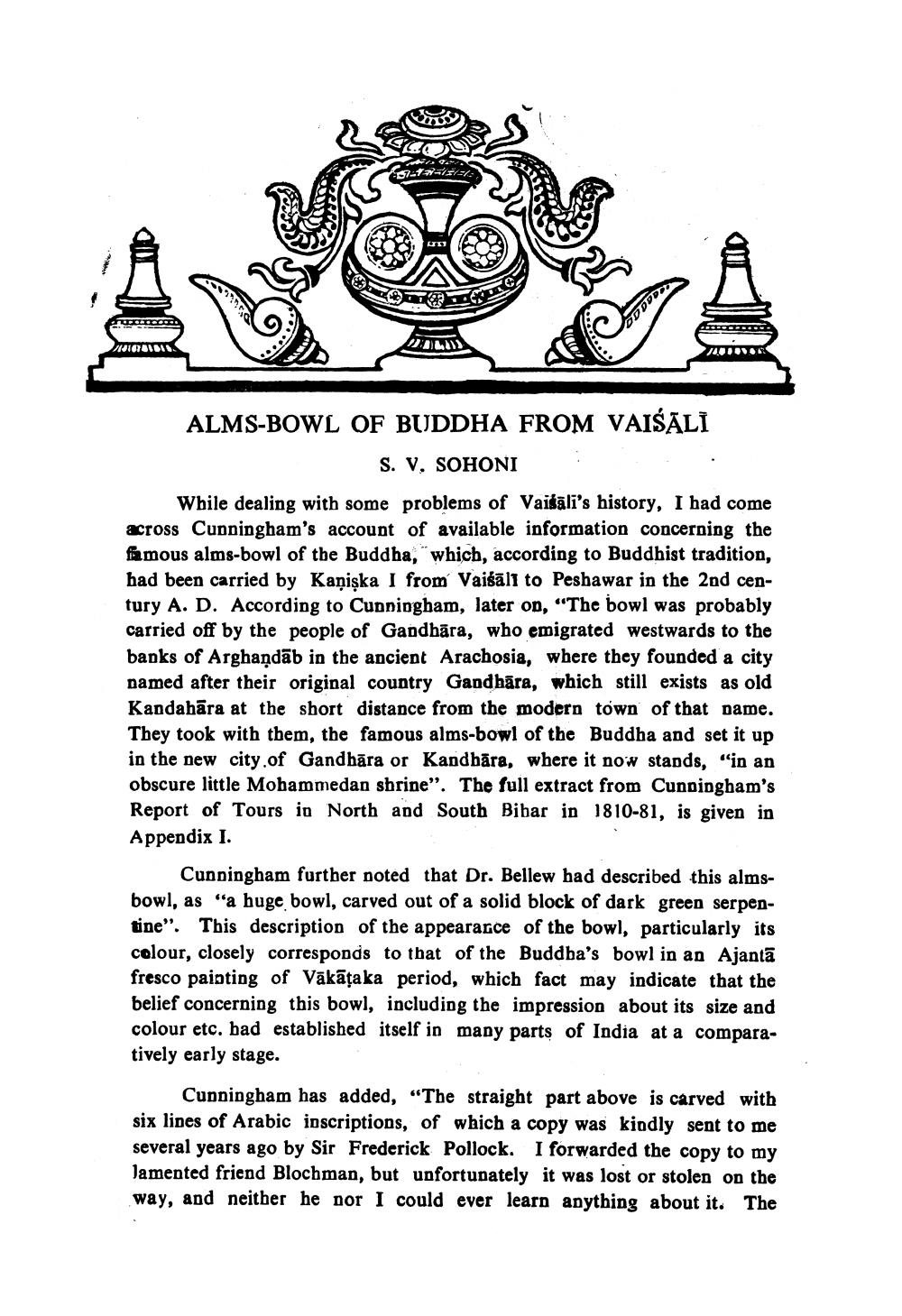________________ OOPT MODA. DOLI ALMS-BOWL OF BUDDHA FROM VAISALI S. V, SOHONI Wbile dealing with some problems of Vaisali's history, I had come across Cunningham's account of available information concerning the famous alms-bowl of the Buddha, which, according to Buddhist tradition, had been carried by Kaniska I from Vaisali to Peshawar in the 2nd century A. D. According to Cunningham, later on, "The bowl was probably carried off by the people of Gandbara, who emigrated westwards to the banks of Arghandab in the ancient Arachosia, where they founded a city named after their original country Gandhara, which still exists as old Kandahara at the short distance from the modern town of that name. They took with them, the famous alms-bowl of the Buddha and set it up in the new city.of Gandhara or Kandbara, where it now stands, "in an obscure little Mohammedan shrine". The full extract from Cunningham's Report of Tours in North and South Bibar in 1810-81, is given in Appendix I. Cunningham further noted that Dr. Bellew had described this almsbowl, as "a huge bowl, carved out of a solid block of dark green serpentine". This description of the appearance of the bowl, particularly its colour, closely corresponds to that of the Buddba's bowl in an Ajanta fresco painting of Vakataka period, which fact may indicate that the belief concerning this bowl, including the impression about its size and colour etc. bad established itself in many parts of India at a comparatively early stage. Cunningham has added, "The straight part above is carved with six lines of Arabic inscriptions, of which a copy was kindly sent to me several years ago by Sir Frederick Pollock. I forwarded the copy to my Jamented friend Blochman, but unfortunately it was lost or stolen on the way, and neither he nor I could ever learn anything about it. The




